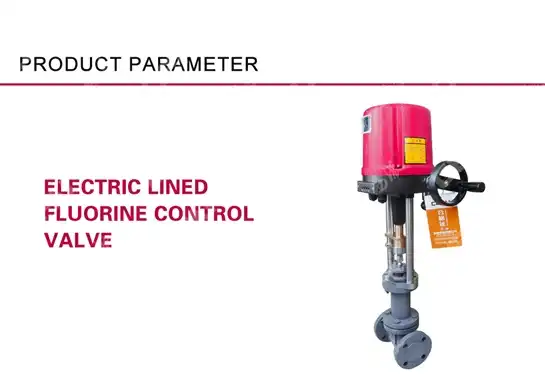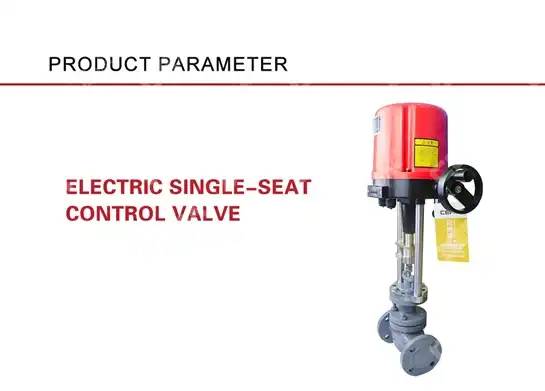The Ultimate Guide to Control Valve Actuators: Types and Applications
Industrial process operations face critical challenges when Control Valve Actuators fail unexpectedly, leading to production shutdowns, safety hazards, and costly maintenance. Whether you're managing oil refineries, chemical plants, or water treatment facilities, selecting the wrong actuator type can result in operational inefficiency and equipment failure. This comprehensive guide addresses these pain points by providing essential insights into Control Valve Actuators, their various types, applications, and selection criteria to help you make informed decisions that optimize your industrial processes and minimize downtime.
Understanding Control Valve Actuators Fundamentals
Control Valve Actuators serve as the driving force behind valve operations in industrial automation systems. These mechanical devices convert various forms of energy into motion, enabling precise control of fluid flow through pipelines. The fundamental principle involves receiving control signals from process control systems and translating them into mechanical movement to position valve stems or discs accurately. Modern industrial facilities rely heavily on Control Valve Actuators to maintain optimal process conditions. These devices operate continuously under demanding conditions, including extreme temperatures, corrosive environments, and high-pressure applications. Understanding their basic operation principles is crucial for process engineers and plant operators who need to ensure reliable system performance. The integration of Control Valve Actuators with digital control systems has revolutionized industrial automation. Advanced actuator technologies now incorporate smart diagnostics, predictive maintenance capabilities, and enhanced communication protocols. These innovations enable real-time monitoring of actuator health, reducing unexpected failures and improving overall system reliability.
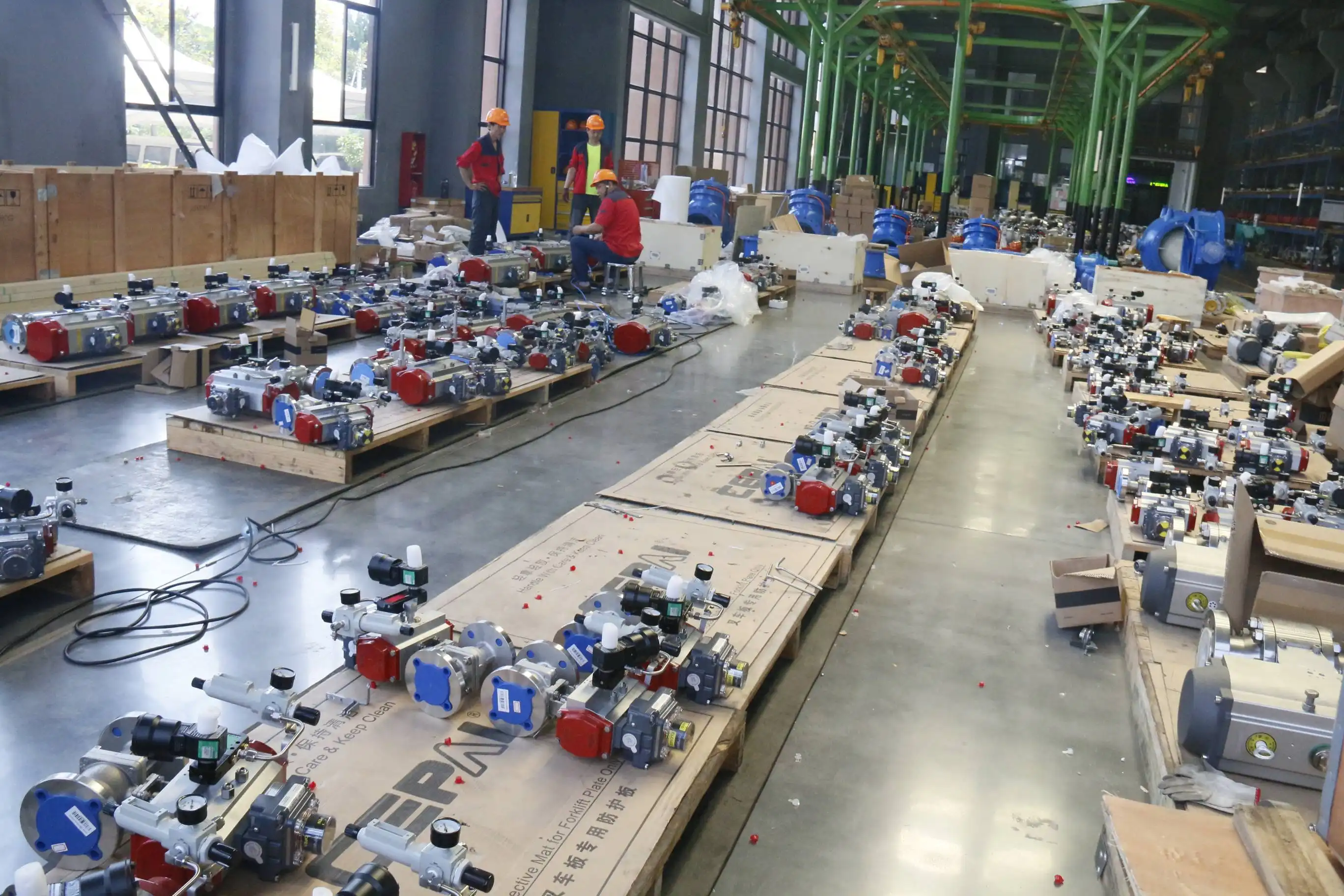
-
Key Components of Control Valve Actuators
Control Valve Actuators consist of several essential components that work together to achieve precise valve positioning. The primary components include the actuator body, which houses the main operating mechanism, and the connection assembly that links the actuator to the valve stem. Power transmission elements vary depending on the actuator type but typically include pistons, diaphragms, or electric motors. Position feedback systems represent another critical component of modern Control Valve Actuators. These systems provide continuous information about valve position to the control system, enabling closed-loop control and improved accuracy. Positioners, integral to many actuator designs, compare the control signal with actual valve position and make necessary adjustments to maintain desired positioning. Safety mechanisms constitute vital components in Control Valve Actuators, particularly in hazardous applications. These include fail-safe features that automatically position the valve to a safe state during power failures or emergency conditions. Spring-return mechanisms, backup power supplies, and manual overrides ensure system safety and operational continuity under adverse conditions.
Types of Control Valve Actuators
-
Pneumatic Control Valve Actuators
Pneumatic Control Valve Actuators dominate industrial applications due to their reliability, cost-effectiveness, and intrinsic safety characteristics. These actuators utilize compressed air to generate the force required for valve operation. The basic design incorporates a flexible diaphragm or piston arrangement that responds to air pressure changes, creating linear or rotary motion depending on the specific configuration. The operation of pneumatic Control Valve Actuators involves converting pneumatic signals, typically ranging from 3-15 psi or 0.2-1.0 bar, into mechanical displacement. Spring-loaded designs provide fail-safe operation, automatically positioning the valve to a predetermined safe position when air supply is interrupted. This inherent safety feature makes pneumatic actuators particularly suitable for critical process applications where system failures could have severe consequences. Pneumatic Control Valve Actuators offer several advantages including fast response times, high force output capability, and excellent performance in explosive environments. Their simple mechanical design results in lower maintenance requirements compared to electric alternatives. However, these actuators require a reliable compressed air supply system and may experience performance variations due to air quality issues or supply pressure fluctuations.
-
Electric Control Valve Actuators
Electric Control Valve Actuators have gained significant popularity in modern industrial applications due to their precision, energy efficiency, and advanced control capabilities. These devices utilize electric motors, typically servo or stepper motors, to generate the mechanical force required for valve positioning. The motor output is transmitted through gear reduction systems to achieve the necessary torque and positioning accuracy. The primary advantage of electric Control Valve Actuators lies in their exceptional positioning accuracy and repeatability. Digital control systems can precisely control motor rotation, enabling accurate valve positioning within fractions of a degree or millimeters of linear displacement. This precision makes electric actuators ideal for applications requiring tight process control tolerances. Electric Control Valve Actuators incorporate sophisticated control electronics that enable advanced functionality including programmable positioning profiles, diagnostic capabilities, and communication with plant control systems. These features support predictive maintenance strategies and optimize overall system performance. However, electric actuators typically have higher initial costs and may require additional safety considerations in hazardous environments.
-
Hydraulic Control Valve Actuators
Hydraulic Control Valve Actuators excel in applications requiring extremely high force output and precise positioning under demanding operating conditions. These actuators utilize pressurized hydraulic fluid, typically oil-based, to generate mechanical force through piston-cylinder arrangements. The incompressible nature of hydraulic fluid provides excellent stiffness and positioning stability. The operation of hydraulic Control Valve Actuators involves controlling hydraulic fluid flow to actuator cylinders using servo valves or proportional valves. This arrangement enables precise force and position control with rapid response characteristics. Hydraulic systems can generate significantly higher forces per unit size compared to pneumatic or electric alternatives, making them suitable for large valve applications. Hydraulic Control Valve Actuators offer superior performance in high-force, high-precision applications but require complex auxiliary systems including hydraulic power units, filtration systems, and temperature control equipment. Maintenance requirements are typically higher due to hydraulic fluid management needs and potential leakage issues. Environmental considerations may also limit hydraulic actuator applications in certain industries.
Applications of Control Valve Actuators
-
Oil and Gas Industry Applications
The oil and gas industry represents one of the largest markets for Control Valve Actuators, with applications spanning upstream exploration, midstream processing, and downstream refining operations. In offshore drilling platforms, Control Valve Actuators operate under extreme environmental conditions including saltwater exposure, high pressures, and temperature variations. These actuators control critical functions including blowout preventers, choke valves, and production manifold systems. Pipeline transmission systems rely extensively on Control Valve Actuators for pressure regulation, flow control, and emergency shutdown functions. Large-diameter pipeline valves require high-torque actuators capable of operating reliably over extended periods with minimal maintenance. Natural gas processing facilities utilize Control Valve Actuators for separation processes, compression systems, and safety shutdown applications. Refinery operations demand precise control of complex chemical processes where Control Valve Actuators regulate temperature, pressure, and flow conditions throughout distillation columns, catalytic reactors, and product handling systems. The corrosive nature of many refinery processes requires actuators with specialized materials and coatings to ensure long-term reliability and performance.
-
Chemical Processing Applications
Chemical processing industries utilize Control Valve Actuators in diverse applications ranging from basic chemical production to pharmaceutical manufacturing. These environments often involve corrosive chemicals, extreme temperatures, and stringent purity requirements that challenge actuator design and material selection. Control Valve Actuators in chemical plants must maintain precise process conditions while ensuring worker safety and environmental protection. Batch processing operations require Control Valve Actuators capable of rapid, accurate positioning to maintain product quality and optimize cycle times. Recipe-based manufacturing processes depend on actuator repeatability to ensure consistent product characteristics. Advanced control algorithms integrated with modern Control Valve Actuators enable complex process optimization and real-time quality control. Specialty chemical production often involves hazardous materials requiring explosion-proof actuator designs and fail-safe operation modes. Control Valve Actuators in these applications must comply with stringent safety standards and provide reliable operation under emergency conditions. Maintenance accessibility and contamination prevention are critical considerations in actuator selection and installation.
-
Power Generation Applications
Power generation facilities depend on Control Valve Actuators for steam control, fuel management, and cooling system operations. Coal-fired power plants utilize actuators for combustion air control, fuel feed systems, and flue gas treatment processes. The high-temperature, high-pressure conditions in power generation require robust actuator designs capable of continuous operation under demanding conditions. Nuclear power facilities impose the most stringent requirements on Control Valve Actuators due to safety and reliability considerations. Actuators in nuclear applications must meet rigorous qualification standards including seismic resistance, radiation tolerance, and emergency response capabilities. Quality assurance and documentation requirements exceed those of conventional industrial applications. Renewable energy systems including geothermal and concentrated solar power plants utilize Control Valve Actuators for thermal management and working fluid control. These applications often involve unique operating conditions and fluid properties that require specialized actuator designs and materials. Energy efficiency considerations drive the selection of actuator technologies that minimize parasitic power consumption.
Selection Criteria for Control Valve Actuators
-
Performance Requirements Analysis
Selecting appropriate Control Valve Actuators requires comprehensive analysis of performance requirements including force or torque output, positioning accuracy, response time, and operating frequency. Force calculations must account for valve design, operating pressure differential, packing friction, and safety factors. Undersized actuators may fail to operate valves reliably, while oversized units increase costs and may reduce control sensitivity. Positioning accuracy requirements depend on process control objectives and valve characteristics. Applications requiring tight process control demand actuators with high positioning resolution and minimal dead-band. Response time specifications must consider process dynamics and control loop stability requirements. Fast-acting processes may require actuators with rapid response capabilities, while slower processes may prioritize positioning accuracy over speed. Operating frequency and duty cycle considerations affect actuator design selection and expected service life. Continuous positioning applications require different actuator characteristics compared to on-off service applications. Environmental factors including temperature, humidity, vibration, and corrosive conditions significantly influence actuator selection and material requirements.
-
Environmental and Safety Considerations
Environmental conditions significantly impact Control Valve Actuators performance and reliability. Temperature extremes affect actuator materials, seals, and lubricants, requiring careful selection of components rated for specific temperature ranges. Corrosive environments demand specialized materials, coatings, and seal designs to prevent premature failure and ensure long-term reliability. Hazardous area classifications require Control Valve Actuators with appropriate safety certifications including explosion-proof or intrinsically safe designs. Electrical equipment in hazardous areas must comply with relevant standards including ATEX, IECEx, or NEC classifications. Pneumatic actuators may offer inherent safety advantages in certain hazardous environments due to their non-electrical operation. Seismic resistance requirements in earthquake-prone regions affect actuator mounting and design considerations. Nuclear and petrochemical facilities often require actuators qualified for seismic events to ensure continued operation during emergencies. Fire safety considerations may influence actuator selection, particularly in applications where fire exposure could compromise actuator operation or integrity.
Advanced Technologies in Control Valve Actuators
Modern Control Valve Actuators incorporate advanced technologies that enhance performance, reliability, and maintenance efficiency. Smart actuator technologies integrate digital communication capabilities, enabling remote monitoring, diagnostics, and parameter adjustment. These features support predictive maintenance strategies and optimize overall system performance through real-time condition monitoring. Digital positioners represent a significant advancement in actuator control technology. These devices provide precise valve positioning while offering diagnostic capabilities that monitor actuator health, detect developing problems, and optimize performance parameters. Advanced algorithms compensate for wear, environmental changes, and process variations to maintain consistent performance over extended service periods. Wireless communication technologies enable Control Valve Actuators to participate in Industrial Internet of Things (IoT) networks, providing real-time data to plant management systems. This connectivity supports advanced analytics, machine learning applications, and integrated asset management strategies. Wireless technologies also reduce installation costs and enable actuator deployment in locations where wired communication is impractical.
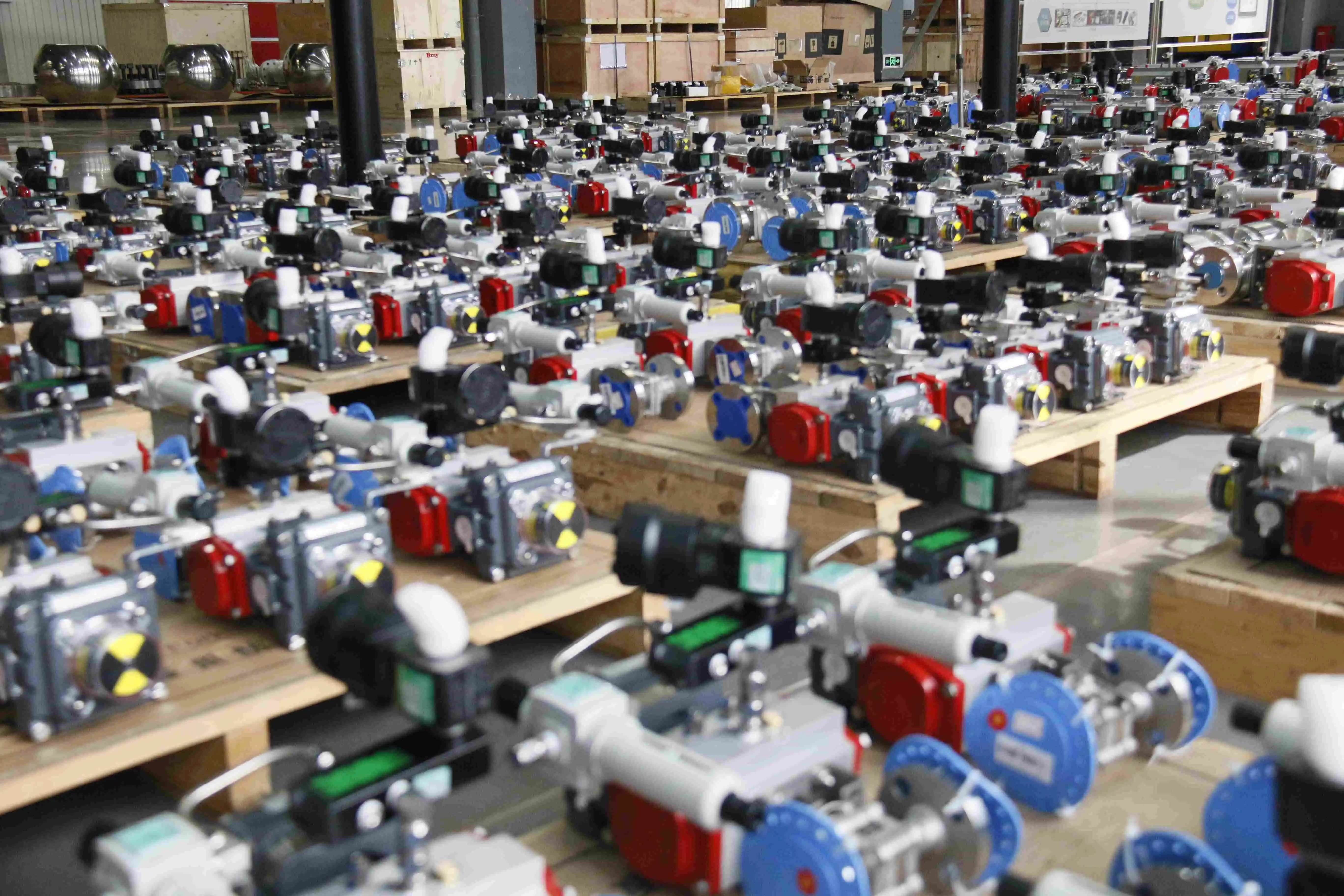
Maintenance and Troubleshooting
Effective maintenance programs for Control Valve Actuators combine preventive maintenance schedules with condition-based monitoring techniques. Regular inspection procedures should include visual examinations, performance testing, and diagnostic data analysis. Preventive maintenance tasks typically involve lubrication, seal replacement, calibration verification, and cleaning procedures based on manufacturer recommendations and operating experience. Troubleshooting Control Valve Actuators requires systematic approaches that consider actuator design, control system integration, and process conditions. Common failure modes include seal leakage, positioning errors, excessive wear, and control system communication problems. Diagnostic tools and techniques help identify root causes and guide appropriate corrective actions while minimizing process disruption. Predictive maintenance strategies utilize continuous monitoring data to identify developing problems before they result in actuator failures. Vibration analysis, temperature monitoring, current signature analysis, and position deviation trending provide insights into actuator condition and remaining useful life. These techniques enable optimized maintenance scheduling and reduce unplanned downtime while extending actuator service life.
Conclusion
Control Valve Actuators represent critical components in modern industrial automation systems, enabling precise process control and reliable operation across diverse applications. Understanding the various actuator types, their characteristics, and application requirements is essential for optimal system performance. Proper selection, installation, and maintenance of Control Valve Actuators directly impact plant reliability, safety, and operational efficiency, making informed decision-making crucial for industrial success.
Cooperate with CEPAI Group Co., LTD.
As a leading China Control Valve Actuators manufacturer, CEPAI Group Co., LTD. delivers world-class Control Valve Actuators backed by advanced manufacturing capabilities and rigorous quality control. Our state-of-the-art facility in Jiangsu Province features the longest high-precision intelligent manufacturing production line in the Asia Pacific region, ensuring exceptional product quality and consistency. With API certifications and ISO management systems, CEPAI serves as your trusted China Control Valve Actuators supplier for critical applications.
Our comprehensive product portfolio includes High Quality Control Valve Actuators designed for oil and gas, petrochemical, and power generation industries. As an established China Control Valve Actuators factory, we maintain strict quality standards throughout our manufacturing processes, from raw material inspection to final testing. Our experienced engineering team provides technical consultation, customized solutions, and comprehensive after-sales support to ensure optimal actuator performance in your applications.
CEPAI's competitive Control Valve Actuators price structure, combined with our position as a reliable China Control Valve Actuators wholesale provider, makes us the preferred partner for industrial automation projects worldwide. Our extensive inventory of Control Valve Actuators for sale ensures rapid delivery and responsive customer service. Contact us at cepai@cepai.com for technical specifications, pricing information, and project consultation. Bookmark this guide for future reference when evaluating actuator solutions for your industrial applications.
FAQ
Q: What is the difference between pneumatic and electric Control Valve Actuators?
A: Pneumatic actuators use compressed air for operation, offering inherent safety and fast response, while electric actuators provide precise positioning and advanced digital control capabilities with higher energy efficiency.
Q: How do I determine the correct actuator size for my valve application?
A: Actuator sizing requires calculating the maximum force or torque needed considering valve design, pressure differential, packing friction, and safety factors, typically requiring 1.5-2.0 times calculated values.
Q: What maintenance is required for Control Valve Actuators?
A: Regular maintenance includes lubrication, seal inspection, calibration verification, and diagnostic testing according to manufacturer schedules, typically ranging from quarterly to annual intervals depending on application severity.
Q: Can Control Valve Actuators operate in hazardous environments?
A: Yes, specialized actuators are designed for hazardous areas with appropriate certifications such as ATEX or IECEx for explosive atmospheres, and corrosion-resistant materials for harsh chemical environments.
References
1. "Control Valve Handbook" by Emerson Process Management, Fisher Controls International LLC, Fourth Edition
2. "Industrial Control Systems: Mathematical and Statistical Models and Techniques" by Adedeji B. Badiru and Oye Ibidapo-Obe, CRC Press
3. "Valve Selection Handbook: Engineering Fundamentals for Selecting the Right Valve Design for Every Industrial Flow Application" by Peter Smith, Elsevier
4. "Process Control: Modeling, Design, and Simulation" by B. Wayne Bequette, Prentice Hall PTR

Get professional pre-sales technical consultation and valve selection services, customized solution services.
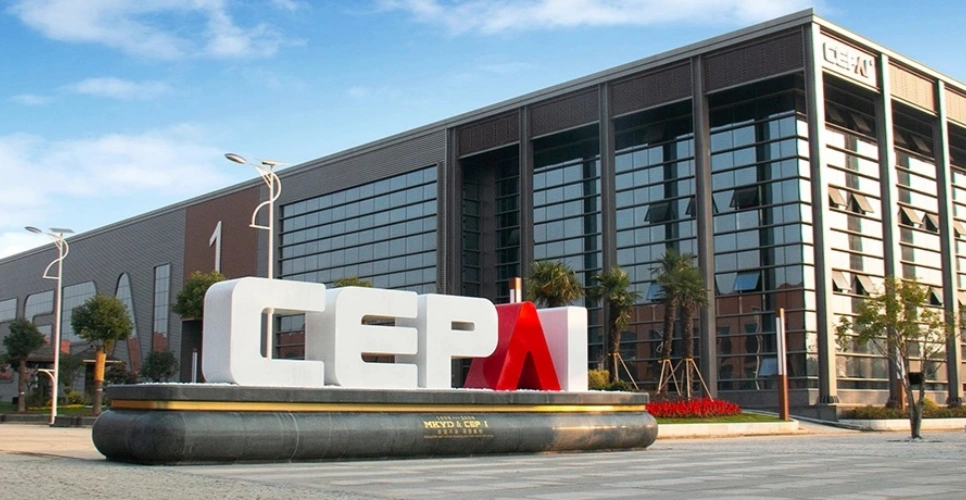
About CEPAI
